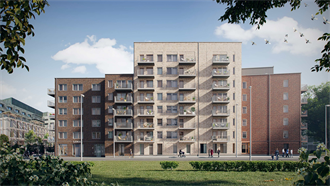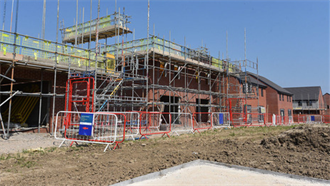Real estate companies are making progress in their move towards sustainable business models and strategies, but they must speed up the momentum of change, says Tatiana Bosteels, head of responsible property investment at Hermes Investment Management.
In a guest column for PropertyEU, published in full below, Bosteels explains why a responsible investment approach is needed for both new and existing buildings.
In recent years, the real estate investment community has undergone a sea change in attitudes towards environmental, social and governance (ESG) concerns, with climate change recognised as a key risk.
Investors increasingly understand that investing through a low-carbon lens is a critical challenge, requiring urgent widespread and consistent action to prevent devastating consequences.
To achieve this, outdated investment models and strategies need to be fundamentally changed, as many are currently not fit for purpose.
Investors need to adopt social responsibility as a central component and prioritise a new set of criteria to achieve consistent performance: namely, climate and resource efficiency, placemaking and wellbeing.
Concentrations of emissions in the atmosphere responsible for increasing global temperatures reached a new high in 2017, a trend showing no sign of reversing. In 2018, the Intergovernmental Panel on Climate Change issued a warning that, unless we limit atmospheric warming to 1.5°C above industrial levels globally, the rapidly growing, catastrophic environmental impact on the world will be irreversible.
And, real estate is responsible for a significant amount of carbon emissions. According to the International Energy Agency, the construction and running of buildings accounts for 36% of global final energy consumption, and almost 40% of total CO2 emissions. In the UK, the Green Building Council reports that the built environment is responsible for approximately 40% of the UK’s total carbon footprint.
It is clear that the real estate industry has a responsibility to implement much-needed changes and contribute to meeting global carbon reduction initiatives and goals. There is also a growing call for greater reporting transparency and accountability in how real estate investors manage environmental risks and ensure their assets are future-proofed.
Investors with extensive real estate portfolios can make the largest contribution and are in the strongest position to lead by example. Investors are realising that through a holistic approach, good returns and what is good for society at large, need not be mutually exclusive. On the contrary, integrating environmental, social and governance matters into investment decisions can generate long-term value.
New and retro fit solutions
Developments currently in progress have the potential to significantly drive local, regional and national economies for generations to come, and to become extensions of major regional cities.
Wellington Place in Leeds, UK, for instance, is a growing hub of 12,000 people who live and work in its newly built offices, retail, leisure and residential buildings. Part of the original plan was to ensure that the development would have a positive impact on its surrounding environment – consequently, all of the new buildings have reached a BREEAM Excellent rating during both design and construction.
Manchester’s NOMA, meanwhile, is one of the biggest development projects in North West England, with 6,000 people already working there. Recently lauded as an ‘innovative district’, the vision is for a well-connected and sustainable community to attract the brightest talent and integrate the latest technologies alongside environmental measures, in a blend of old and new buildings.
But a responsible investment approach does not just concern newly constructed buildings; it is possible to make older buildings carbon-efficient too, while still respecting and celebrating their history. At NOMA, the Grade II-listed Edwardian building, Hanover, still retains its original façade and period features but now holds a BREEAM Very Good rating due to its low energy mechanical and electrical systems, upgraded thermal and acoustic insulation, and close proximity to public transport.
Hanover offers the Grade A office space that contemporary occupiers look for, in a building rich in heritage – evidenced recently, when the building was let in its entirety to Amazon. We are seeing some encouraging progress across the sector already, but it is essential to accelerate the momentum.
About the author
Tatiana Bosteels is director of responsibility and head of responsible property investment at Hermes Investment Management


































